Full text
PDF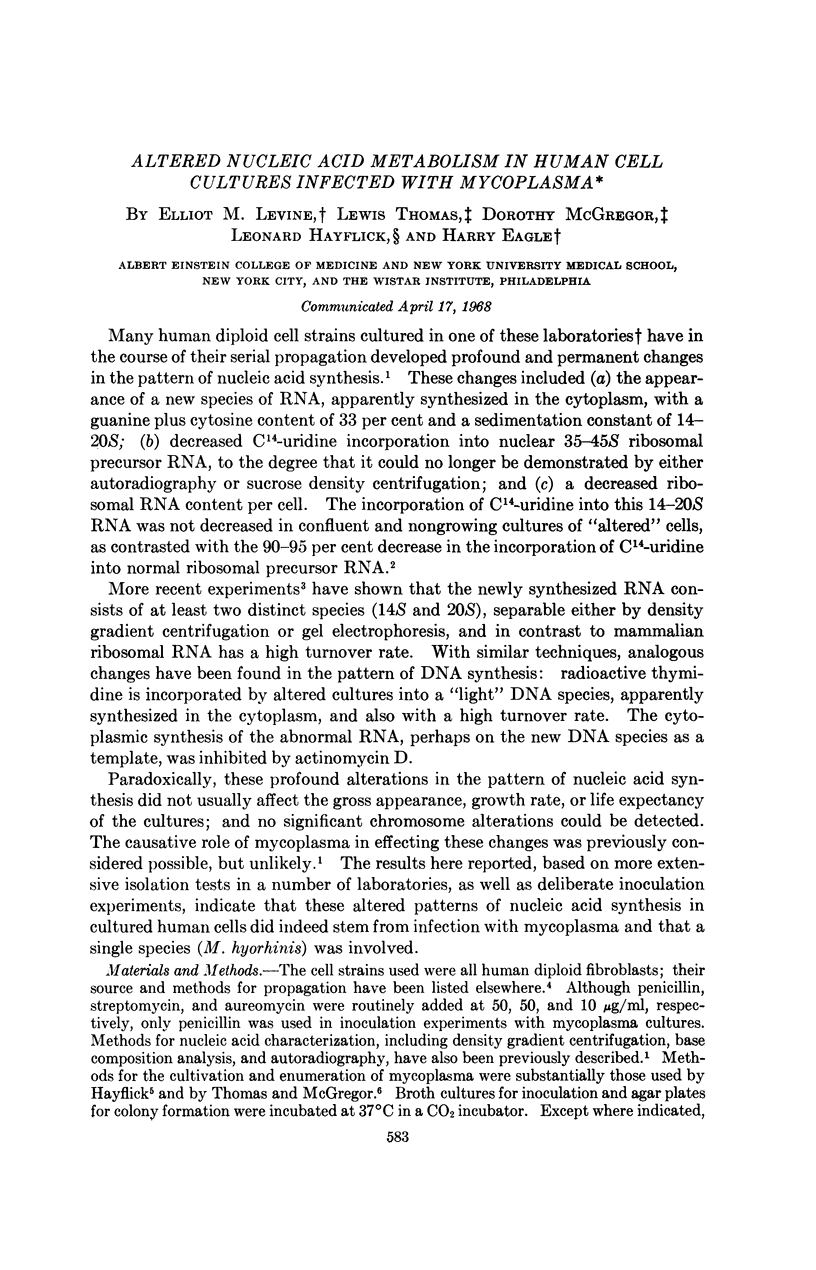
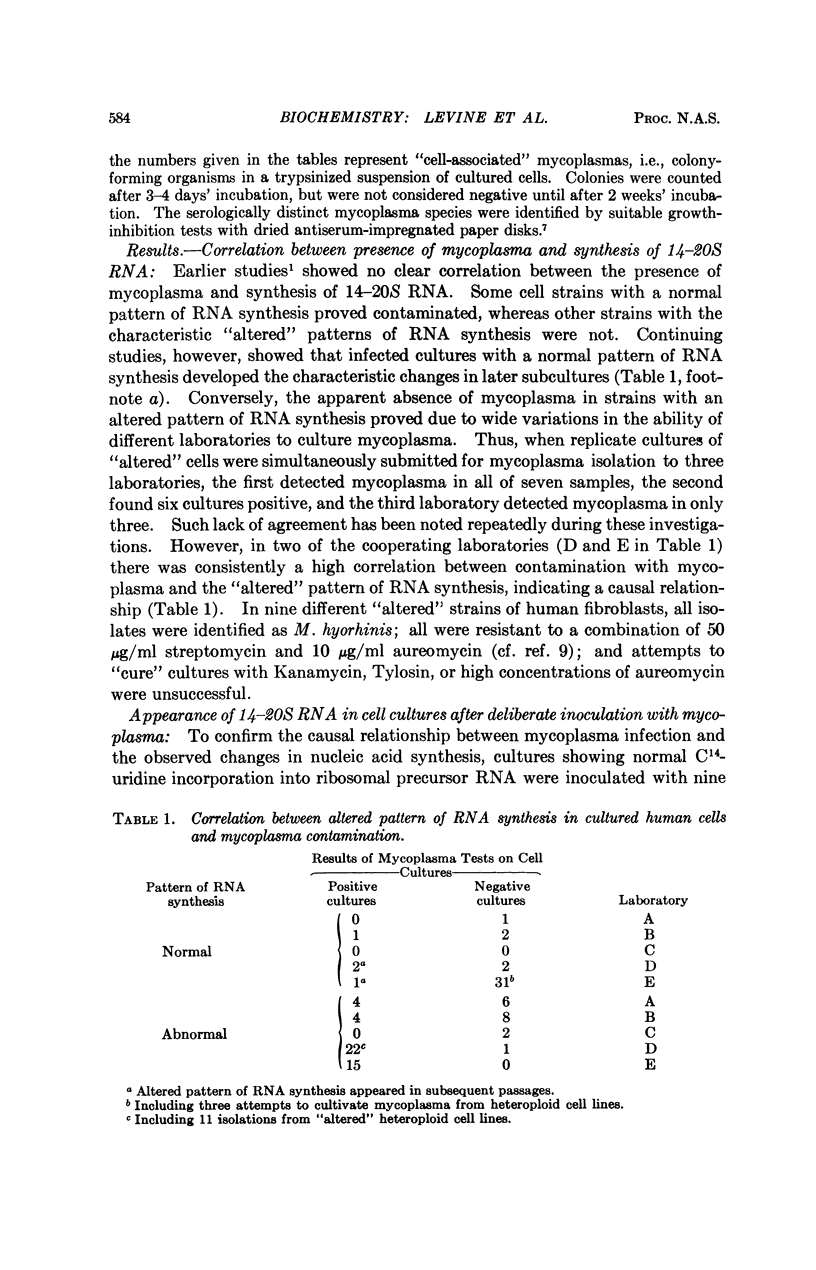
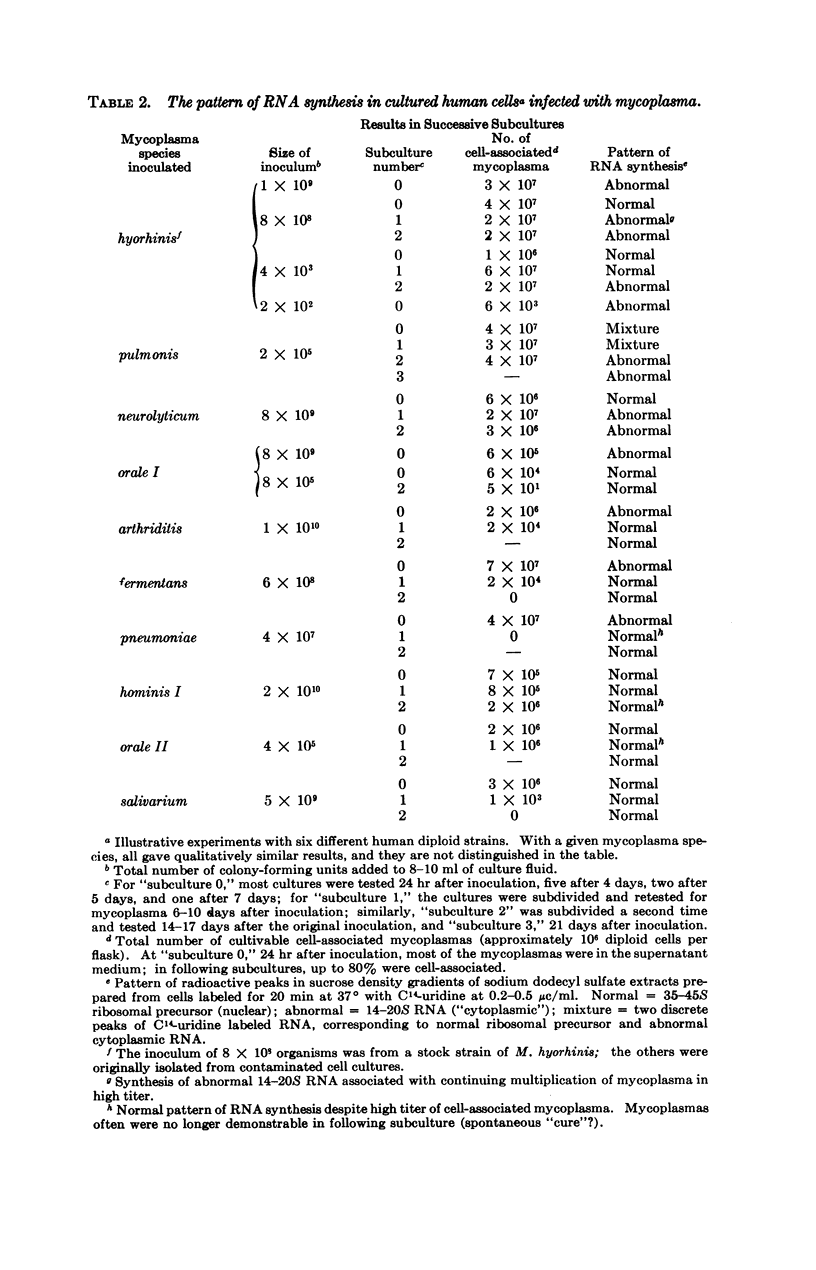
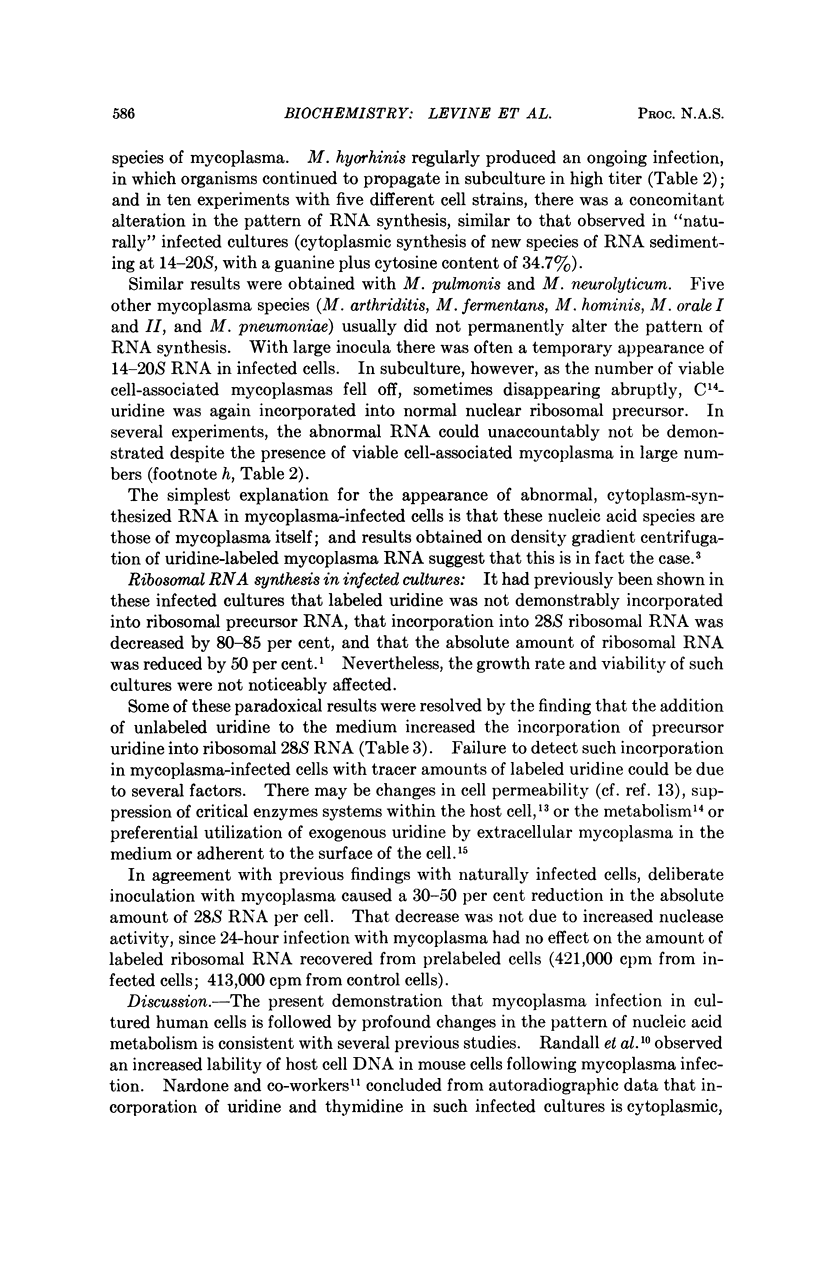
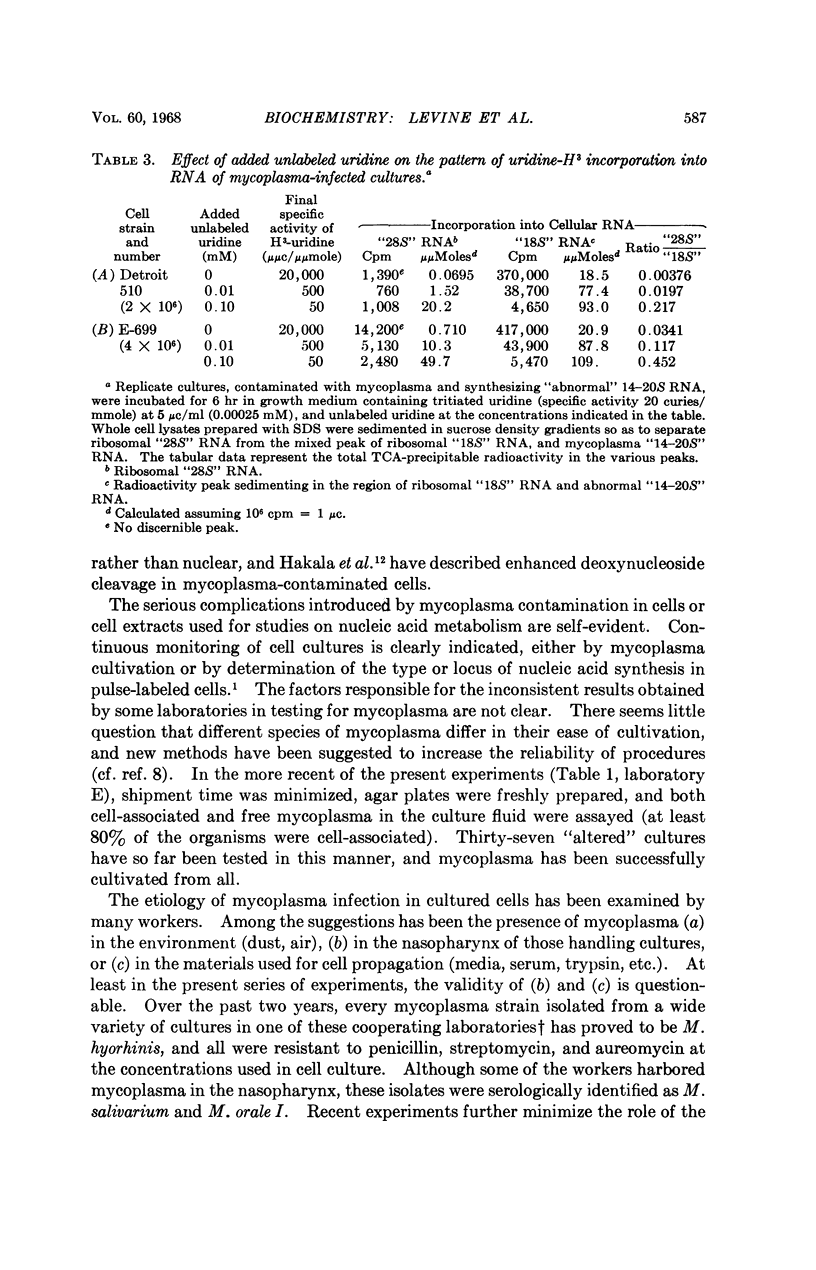
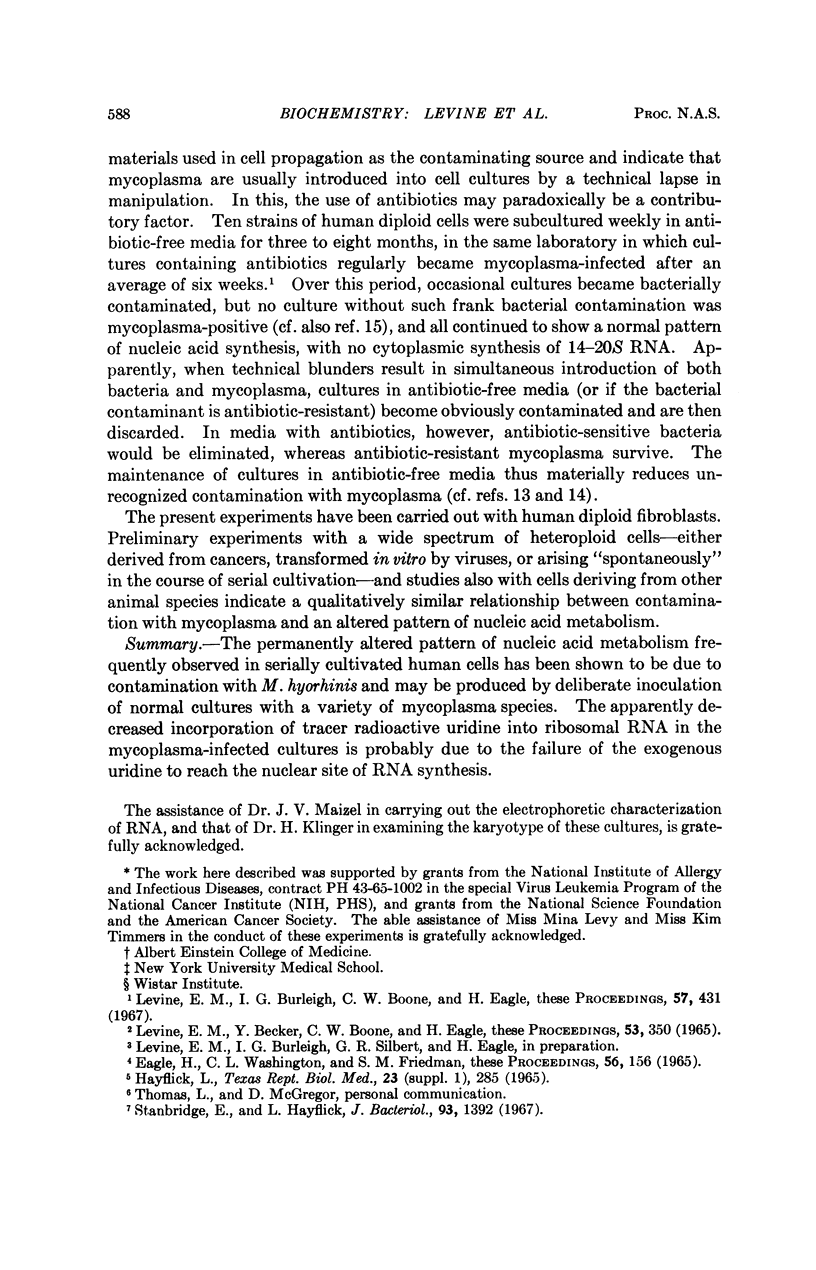
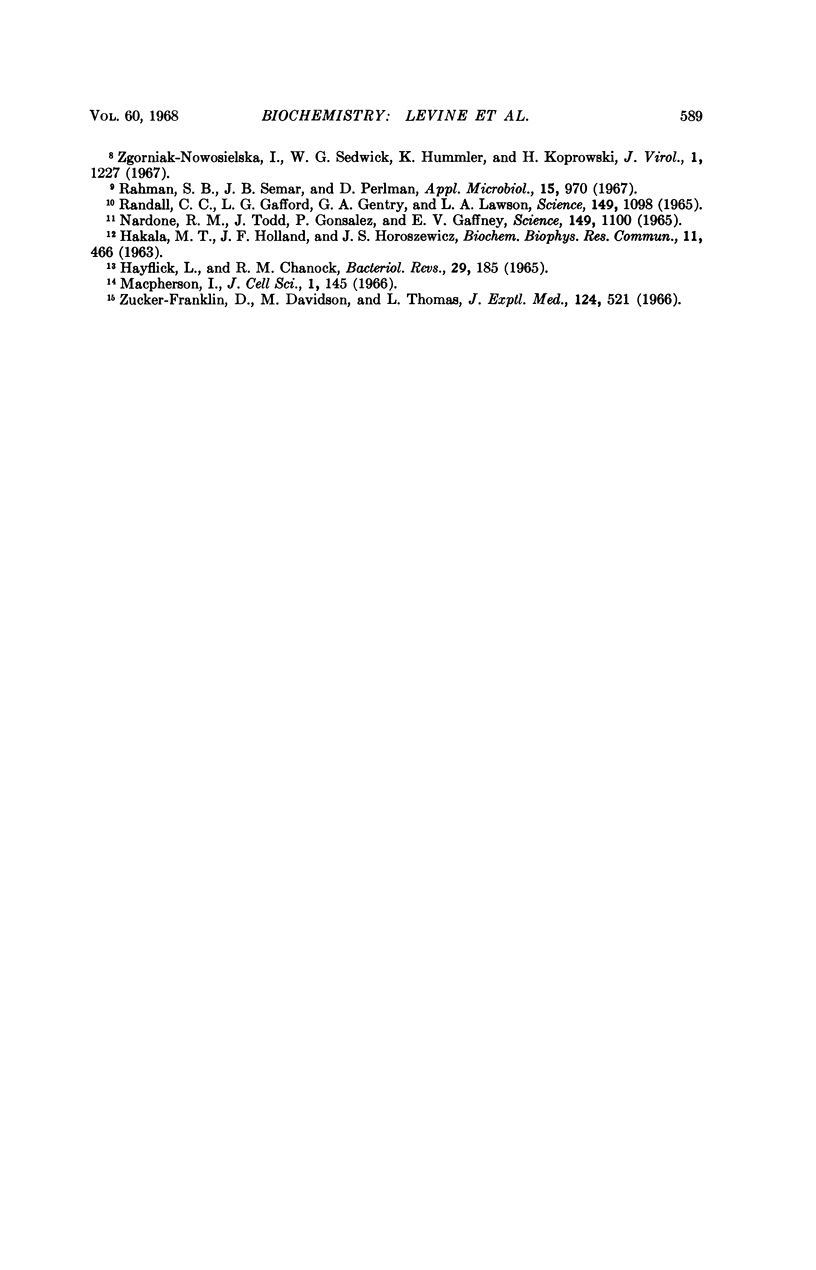
Selected References
These references are in PubMed. This may not be the complete list of references from this article.
- Eagle H., Washington C., Friedman S. M. The synthesis of homocystine, cystathionine, and cystine by cultured diploid and heteroploid human cells. Proc Natl Acad Sci U S A. 1966 Jul;56(1):156–163. doi: 10.1073/pnas.56.1.156. [DOI] [PMC free article] [PubMed] [Google Scholar]
- HAKALA M. T., HOLLAND J. F., HOROSZEWICZ J. S. Change in pyrimidine deoxyribonucleoside metabolism in cell culture caused by Mycoplasma (PPLO) contamination. Biochem Biophys Res Commun. 1963 Jun 20;11:466–471. doi: 10.1016/0006-291x(63)90094-9. [DOI] [PubMed] [Google Scholar]
- HAYFLICK L., CHANOCK R. M. MYCOPLASMA SPECIES OF MAN. Bacteriol Rev. 1965 Jun;29:185–221. doi: 10.1128/br.29.2.185-221.1965. [DOI] [PMC free article] [PubMed] [Google Scholar]
- LEVINE E. M., BECKER Y., BOONE C. W., EAGLE H. CONTACT INHIBITION, MACROMOLECULAR SYNTHESIS, AND POLYRIBOSOMES IN CULTURED HUMAN DIPLOID FIBROBLASTS. Proc Natl Acad Sci U S A. 1965 Feb;53:350–356. doi: 10.1073/pnas.53.2.350. [DOI] [PMC free article] [PubMed] [Google Scholar]
- Levine E. M., Burleigh I. G., Boone C. W., Eagle H. An altered pattern of RNA synthesis in serially propagated human diploid cells. Proc Natl Acad Sci U S A. 1967 Feb;57(2):431–438. doi: 10.1073/pnas.57.2.431. [DOI] [PMC free article] [PubMed] [Google Scholar]
- Nardone R. M., Todd J., Gonzalez P., Gaffney E. V. Nucleoside incorporation into strain L cells: inhibition by pleuropneumonia-like organisms. Science. 1965 Sep 3;149(3688):1100–1101. doi: 10.1126/science.149.3688.1100. [DOI] [PubMed] [Google Scholar]
- Rahman S. B., Semar J. B., Perlman D. Antibiotic resistance in Mycoplasma isolates from tissue cultures. Appl Microbiol. 1967 Jul;15(4):970–970. doi: 10.1128/am.15.4.970-.1967. [DOI] [PMC free article] [PubMed] [Google Scholar]
- Randall C. C., Gafford L. G., Gentry G. A., Lawson L. A. Lability of host-cell DNA in growing cell cultures due to Mycoplasma. Science. 1965 Sep 3;149(3688):1098–1099. doi: 10.1126/science.149.3688.1098. [DOI] [PubMed] [Google Scholar]
- Stanbridge E., Hayflick L. Growth inhibition test for identification of Mycoplasma species utilizing dried antiserum-impregnated paper discs. J Bacteriol. 1967 Apr;93(4):1392–1396. doi: 10.1128/jb.93.4.1392-1396.1967. [DOI] [PMC free article] [PubMed] [Google Scholar]
- Zgorniak-Nowosielska I., Sedwick W. D., Hummeler K., Koprowski H. New assay procedure for separation of mycoplasmas from virus pools and tissue culture systems. J Virol. 1967 Dec;1(6):1227–1237. doi: 10.1128/jvi.1.6.1227-1237.1967. [DOI] [PMC free article] [PubMed] [Google Scholar]
- Zucker-Franklin D., Davidson M., Thomas L. The interaction of mycoplasmas with mammalian cells. I. HeLa cells, neutrophils, and eosinophils. J Exp Med. 1966 Sep 1;124(3):521–532. doi: 10.1084/jem.124.3.521. [DOI] [PMC free article] [PubMed] [Google Scholar]


